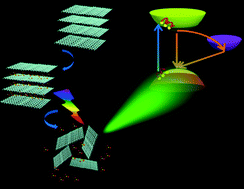2D bismuthene fabricated via acid-intercalated exfoliation showing strong nonlinear near-infrared responses for mode-locking lasers†
Abstract
The rediscovery of black phosphorus (BP) has expanded the 2D family into Group 15 (Nitrogen Group) elements, among which bismuthene is the latest member with extraordinary opto-electronic, catalytic and biocompatible properties and potential as a 2D topological insulator. However, bulk Bi is not easily mechanically exfoliated as its counterpart of BP. Thus, to date, the reports on 2D Bi fabrication are rare, and investigations on its nonlinear optical properties are even less. Herein, we rationally designed a new strategy combining acid-interaction and liquid exfoliation to successfully transform metal bulk Bi into few-layer semiconductor, which resulted in unseen opto-electronic properties, such as tunable nonlinear responses all the way to the near-infrared (NIR) region. This band is critical for telecommunication and military purposes, but currently, functioning materials are extremely scarce. The origin of this strong saturable absorption was thoroughly explored through time-resolved spectroscopy spanning from the fs to μs timescale, which indicated ultrafast fs to ps carrier dynamics in the early stage and long exciton bleaching recovery up to μs. As a proof-of-concept application, the as-prepared 2D Bi was employed as a saturable absorber to mode-lock a Tm-doped fiber laser and successfully realized a 2 μm NIR-wavelength output. This study not only offers an effective and scalable method to fabricate the new 2D family member bismuthene with extraordinary stability, but also explores its strong and broad nonlinear responses extending into the NIR region and fundamental photoinduced dynamics, which demonstrate the full potential of 2D Bi for application in opto-electronic devices and nonlinear optics.



 Please wait while we load your content...
Please wait while we load your content...